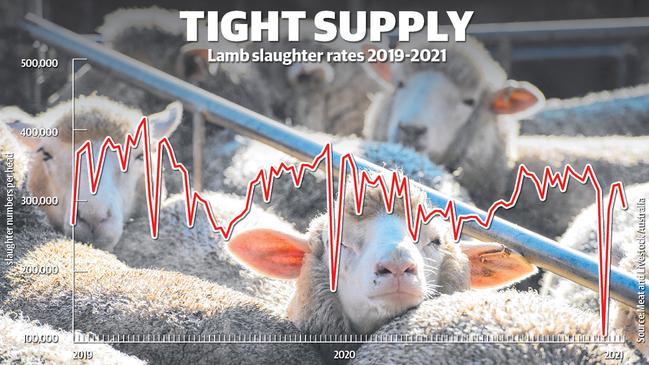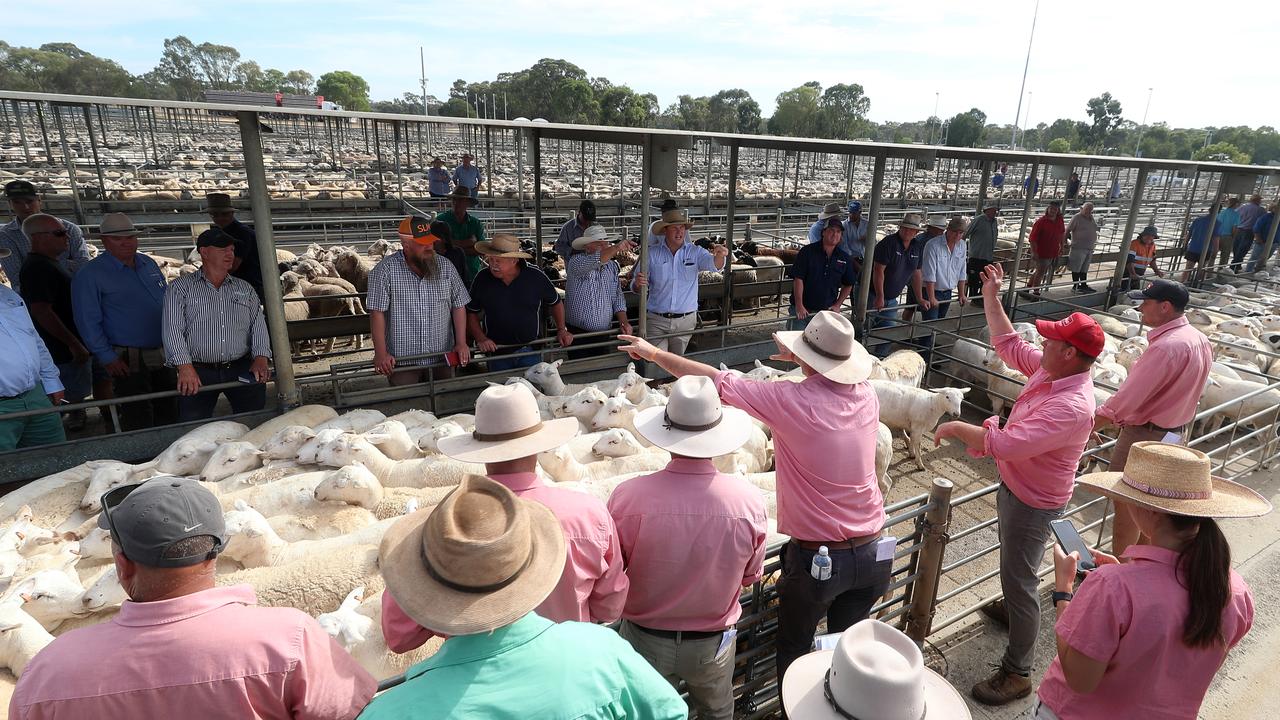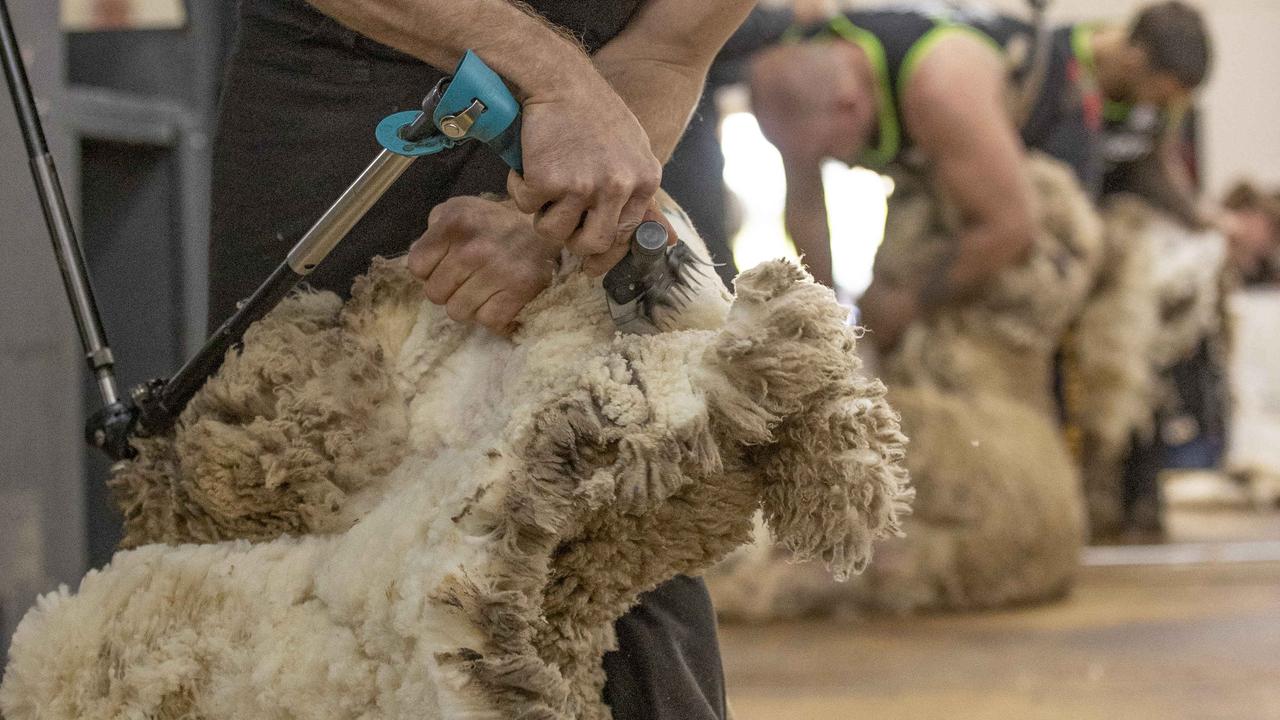Supply and slaughter numbers at play in production
Lamb production should be closely monitored as several factors are playing into the availability and supply of quality stock going forward.
THE lamb slaughter this summer has been low, adding another layer to the ongoing debate about supply and how numbers could flow this autumn and winter.
Data for the month of January had the eastern states lamb kill at 1.22 million, making it the quietest start to a year since at least 2018.
Delve back further, and production since September (that month being the traditional start of the new lamb season) falls shy of 7 million, which is nearly 5 per cent behind the same five-month period in 2019-20.
And as supply rather than demand is currently the key driver of lamb prices, how these slaughter figures are interrupted goes a fair way to how you view the market going forward.
For those of the opinion the industry is facing a tough time for supply, the latest slaughter data is seen as more evidence of the limited flock and tighter overall availability of lambs.
For those with more of a “glass half full” take on the situation, the lower than average kill levels of recent months suggest there are more lambs still out there to be sold this coming autumn and winter.
The graph shows lamb slaughter since 2018.
And as lamb supply is so pivotal to the market, below is the raw data, based on figures from Meat and Livestock Australia.
They show:
1,222,864 lambs slaughtered in January, compared to 1,354,743 last year; and
6,958,420 lambs processed in the past five months (September, October, November, December and January), compared with 7,275,644 in the same period of 2019-20.
There is no simple black and white answer to these figures, rather a lot of grey areas and speculation.

To start, the general consensus among agents is fewer lambs have been carried over in the south due to the solid price rates that were available for suckers over the spring, and the good season that enabled a bigger percentage to reach prime slaughter weights.
They also argue that the limited availability of store lambs in the spring, and their high cost with many costing upwards of $150 at big carcass prices, deterred traders from operating.
On top of this is the push to rebuild flocks and retain crossbred ewe lambs for breeding.
This has shown up at some recent store sales with lines of White Suffolk Merino-cross ewe lambs being offered.
There has also been some suggestion that difficulties finding shearers in the spring led some producers to quit more lambs than they would have liked as woolly suckers.
On those arguments, the pool of lambs for the autumn and winter period looks tight.
But there is a flip slide.
There is also the argument that lambs were carried over in the spring to take advantage of plentiful feed, hence the relatively low slaughter figures since September.
In NSW particularly, there is evidence of volume numbers of very light lambs selling between farmers on AuctionsPlus.
And that those lambs will take longer to come back into the slaughter system (autumn and winter) as farmers add weight to create a margin and take advantage of excess feed.
The argument of light lambs going to the paddock during spring links into the dramatic drop in Muslim kill or bag lambs sized between 14-17kg that in the past have been air freighted to the Middle East. Export data shows a 21 per cent drop in lamb sales to the Middle East last year, due partly to COVID-19 grounding international flights which disrupted airfreight.
This line of thinking of a lot of very light lambs going into NSW segues into the next argument of the price discrepancy between states.
At the moment NSW lamb prices are tracking ahead of the southern states, and some buyers believe it reflects the delay involved in getting those light store lambs up to profitable weights.
Early this week the National Livestock Reporting Service had:
HEAVY lambs listed at 865c/kg in NSW, compared with 824c/kg in Victoria and 798c/kg in SA; and
TRADE lambs at 861c/kg in NSW against 838c/kg in Victoria.
To sum up, there is no clear answer to the pivotal point of lamb supply going forward. But the slow kills of recent months suggest there could be other factors at play and production is something to monitor.
MORE
FINER MICRON WOOL SHINES AS AUSSIE WOOL HITS $1 BILLION FOR THE SEASON


